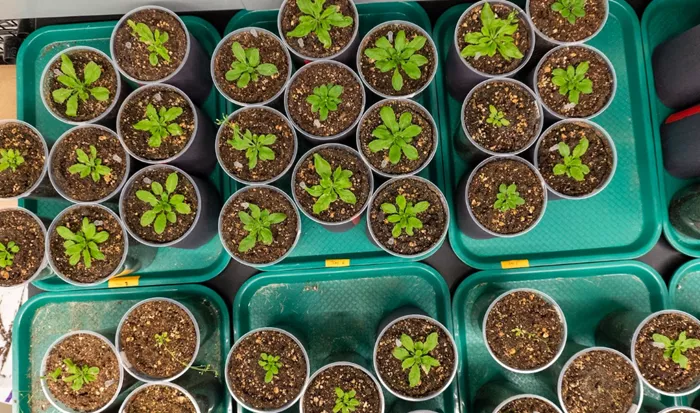Plant Roots May Hold Key to Combating Climate Change.
Wolfgang Busch, a scientist at The Salk Institute, first became fascinated by plant roots during his early research. He was intrigued by how roots, despite lacking a brain, could actively seek out nutrients. Now, he believes these often-overlooked underground structures could help mitigate climate change.
Busch explains that over billions of years, plants have evolved to absorb carbon dioxide (CO2) from the atmosphere. They take in CO2 through their leaves, convert it into their own biological materials, and release oxygen (O2) as a byproduct. “Every part of a plant is made from CO2, powered by sunlight through photosynthesis,” he says. “Plants are very good at this. Making them a bit better could make a significant difference.”
For the past seven years, Busch and his team have worked on engineering plants to develop larger and deeper root systems that contain more suberin. Suberin is a natural polymer found in all land plants. It is known for its ability to capture carbon.
Busch believes that these deeper, suberin-rich roots will help store carbon in the soil for a longer time. Since suberin decomposes slowly, it becomes a stable form of carbon storage in the soil. “It acts like a jawbreaker for soil microbes,” he explains.
Once Busch and his team refine these advanced roots using a model plant, they plan to transfer these traits to common crops. This approach aims to address two pressing issues: the expected global population of 11 billion by 2080 and the need for increased food production. “Combining food production with carbon sequestration was a no-brainer,” Busch states.
The goal is for farmers worldwide to adopt these “Salk Ideal Plants.” While they grow food for a larger population, they will also help sequester carbon in the soil through extensive root systems. Busch anticipates that, if successful, his program could remove two gigatons of carbon from the atmosphere annually within a couple of decades. This amount is comparable to taking 400 million gasoline-powered cars off the road. “We just need to work very hard for it,” he adds.
In the lab, Busch demonstrates this research by showing a small, translucent container with a trial plant. The rice stalk grows in clear agar gel, allowing the roots to be visible. The root system spreads downward, resembling a network of tributaries. “A lot of roots, huh?” he says with a smile.
An innovative seed-planting robot, named Larry, assists Busch and his team. Larry was specially designed for The Salk Institute and funded in part by a crowdfunding campaign.
Related topics:
- How a Potted Plant Helped Me Rebuild My Life After Being Bedbound for Nearly Five Years Due to ME
- Turkey’s Viral Yogi Flower: Is It Genuine or AI-Generated?
- Top 7 Plants for Boosting Mental Health in Your Tranquil Garden


